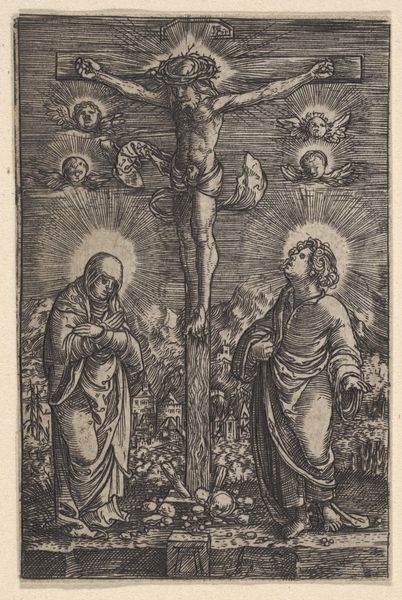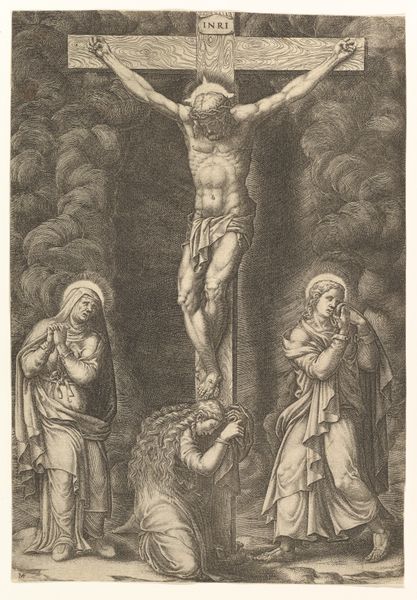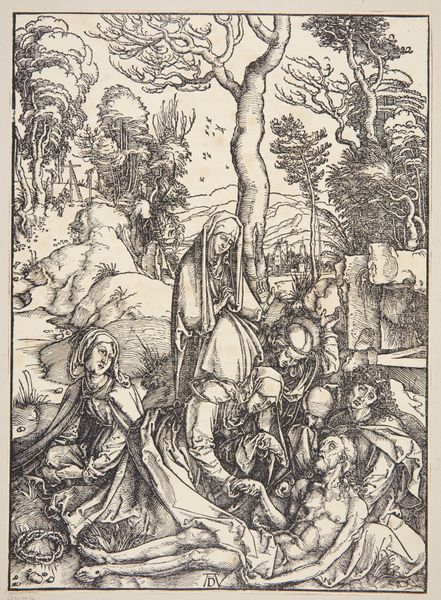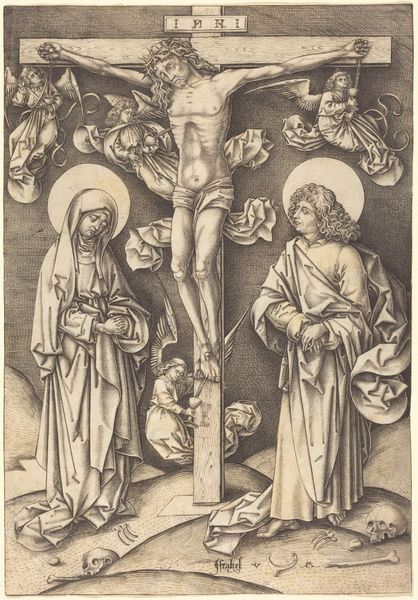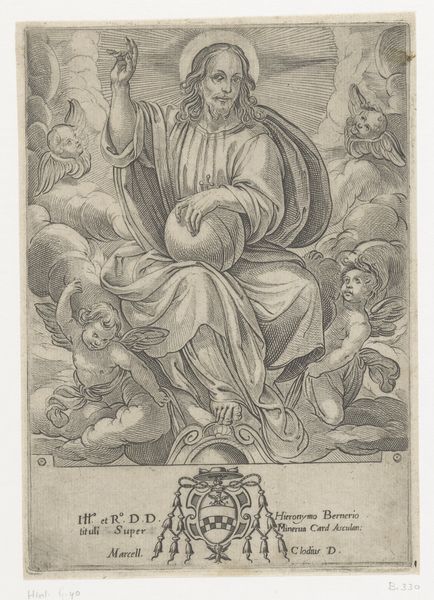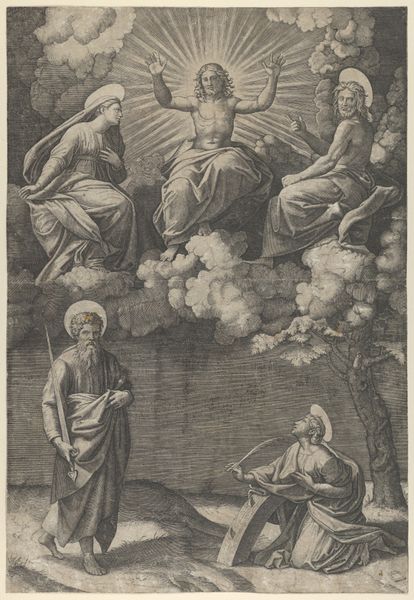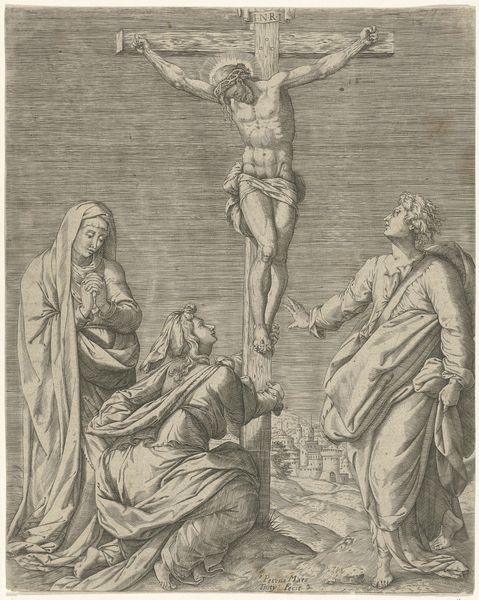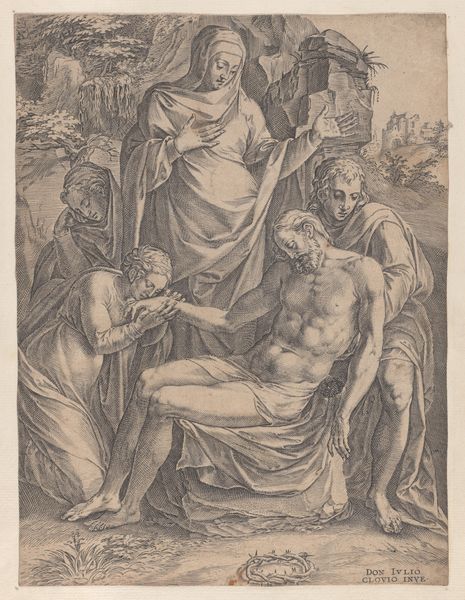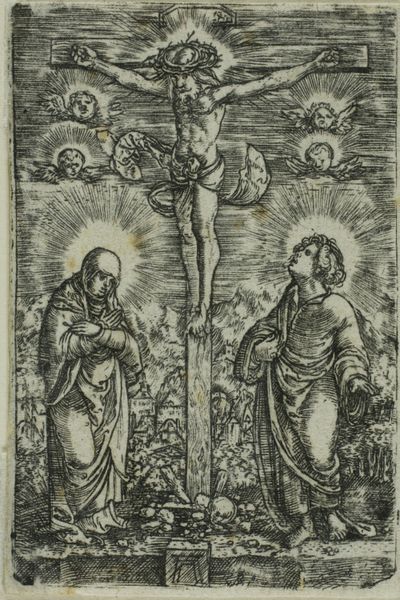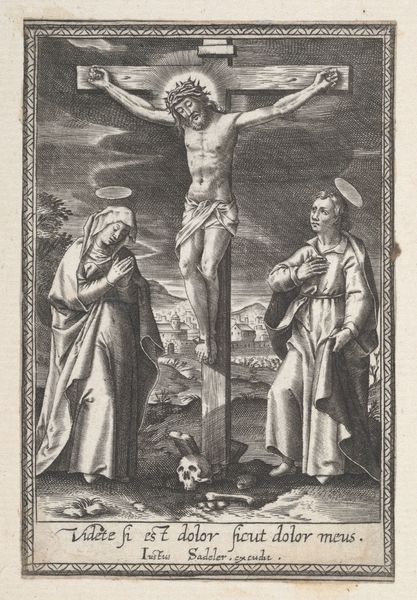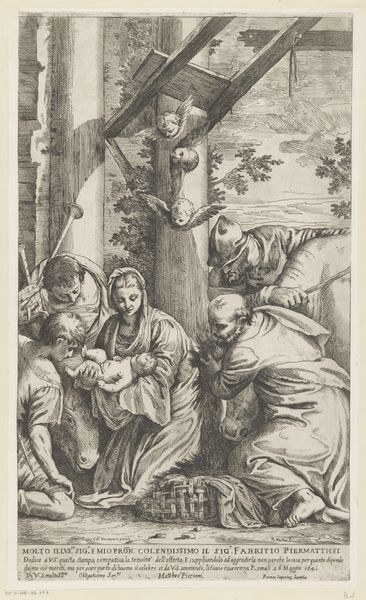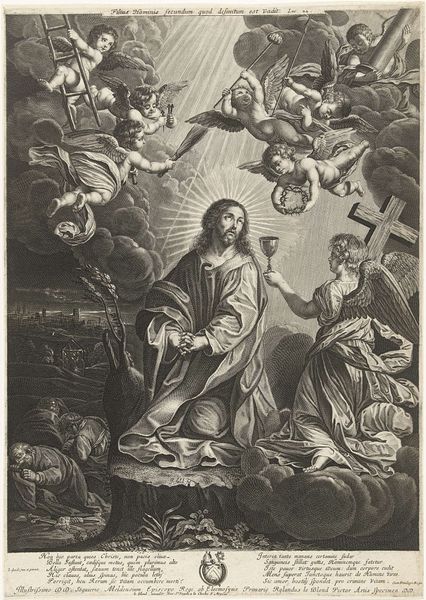
drawing, print, engraving
#
drawing
# print
#
landscape
#
figuration
#
history-painting
#
italian-renaissance
#
engraving
Dimensions: Plate: 14 11/16 × 10 5/16 in. (37.3 × 26.2 cm) Sheet: 14 13/16 × 10 9/16 in. (37.7 × 26.9 cm)
Copyright: Public Domain
Editor: So, this engraving is "The Lamentation of the Virgin Beneath the Cross," made in 1566 by Mario Cartaro, after Michelangelo. It's striking how stark and somber it feels, the barren landscape emphasizing the Virgin's grief. What do you see in this piece, looking beyond the immediate religious subject? Curator: For me, it’s impossible to separate this piece from the political and religious turmoil of 16th-century Europe. The Reformation was shaking the foundations of the Church. Images of the Virgin, often symbols of comfort and intercession, were being challenged, even destroyed, in some regions. Cartaro, working from Michelangelo’s design, is participating in a visual dialogue about faith, power, and gender at a time of immense social upheaval. Consider how the male body of Christ is represented, and how that portrayal reinforces specific notions of piety. How might viewers in different locations or with differing beliefs, react to such a direct expression of Marian grief? Editor: I hadn't considered that interplay between the religious image and the Reformation. That shifts how I perceive the Virgin's posture; her grief seems not just personal, but representative of a threatened belief system. Curator: Exactly. Think of the historical context surrounding this work: the power dynamics, social unrest, and emerging secular thought all impact our understanding. How does Cartaro’s interpretation either reinforce or challenge the traditional roles assigned to women within the Church? Is there any suggestion of resistance or agency, even in sorrow? Editor: I see now that by looking at this engraving, we are not simply looking at religious history but also looking at the beginnings of major social and cultural shifts. It definitely pushes me to ask new questions. Curator: Precisely. Understanding the intricate layers of art – social, historical, and personal– empowers us to analyze not just the work but ourselves, and society’s evolving values.
Comments
No comments
Be the first to comment and join the conversation on the ultimate creative platform.
